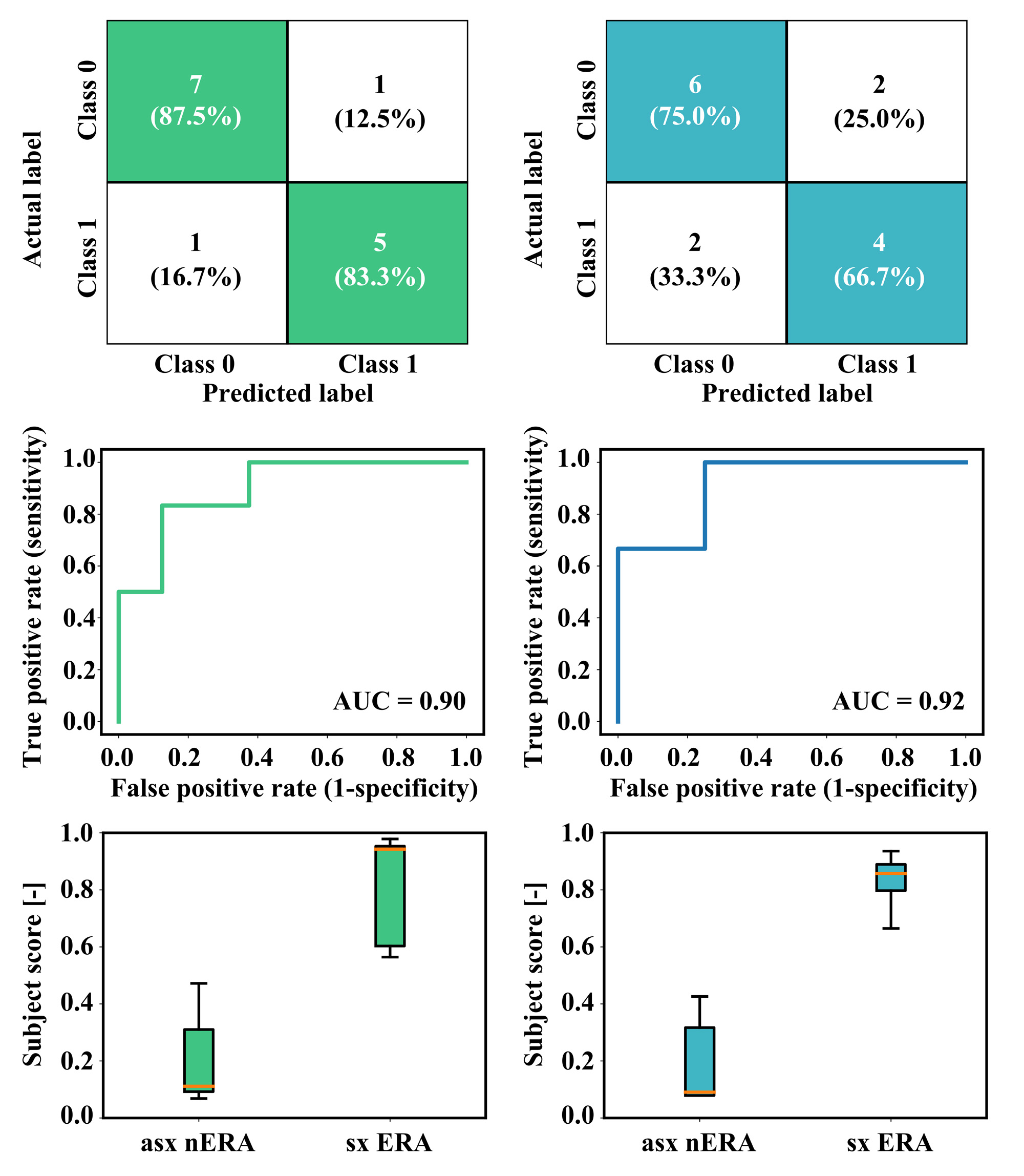Session Information
Session Type: Poster Session A
Session Time: 9:00AM-11:00AM
Background/Purpose: Juvenile Idiopathic Arthritis (JIA) is a chronic condition in children that causes joint inflammation. Enthesitis-related arthritis (ERA), a subtype of JIA, affects 10-20% of patients and is characterized by enthesitis, leading to substantial joint pain and disability. Diagnosing JIA subtypes is challenging due to insensitive and subjective clinical examinations, patient surveys, non-specific laboratory tests and a lack of pediatric rheumatologists worldwide. Active joint acoustic emission (JAE) sensing, using vibrational stimulation, offers potential to assess the inflammatory status of soft tissues such as the Achilles tendon (AT). Integrating JAEs with machine learning (ML) algorithms can offer valuable insights into tendon health. The aim of this study is to demonstrate the utility of active JAEs as a new digital biomarker for assessing AT involvement in ERA.
Methods: JAEs were recorded from 14 patients diagnosed with JIA that were divided into two subgroups: (1)ERA and symptomatic AT enthesitis (sx ERA), and (2) without ERA and asymptomatic ATs (asx nERA). Symptomatic AT enthesitis was determined by tenderness on clinical examby a physician, while asymptomatic AT showed no tenderness, stiffness, or swelling. To record the JAEs, a setup comprising a miniature vibration motor and an accelerometer was used. The vibration motor provided a harmless input train of burst vibrations, while the accelerometer measured the response of the AT in tiptoe position. The recorded signals were filtered, and 25 bursts were segmented to extract 25 temporal features and the top 3 principal components(PC).Two MLclassifier (logistic regression) was trained using three most salient features and the second and third PCs, respectively. Two subject-wise cross-validation approaches were used to assess the model’s generalizability: leave-one-subject-out cross-validation (LOSO-CV) and a 3-fold cross-validation. The latter was performed 10 times with unique combinations to evaluate robustness.
Results: The feature-based LOSO-CV resulted in an 86% accuracy, 83% sensitivity and 88% specificity. The PC-based LOSO-CV resulted in a 71% accuracy, 67% sensitivity and 75% specificity. The corresponding confusion matrices, ROC curves and boxplot of the subject scores are shown in Figure 1. The iterations of the 3-fold cross-validation when considering the feature-based approach resulted in a 79% mean accuracy (range: 71-93%), a 70% mean sensitivity (range: 50-83%) and an 86% mean specificity (range 75-100%). When considering the PC-based classification, the 3-fold validation resulted in a 76% mean accuracy (range: 64-93%) a 72% mean sensitivity (range: 67-100%) and an 80% mean specificity (range 63-100%).
Conclusion: The presented results lay the foundation in recognizing the potential utility of active JAE technology to identify and label symptomatology on the entheses of the Achilles tendon. While more work needs to be done to increase the sample size and optimize the technology by using training labels validated by gold standard technology, JAEs hold promise as a screening or disease monitoring tool that can be used in clinic or at home and that may help decrease disease morbidity caused by JIA in children.
To cite this abstract in AMA style:
Goossens Q, Locsin M, Moise E, Ponder L, Inan O, Prahalad S. Active Joint Acoustic Emissions on the Achilles Tendon: A Digital Biomarker of Enthesitis Related Arthritis [abstract]. Arthritis Rheumatol. 2023; 75 (suppl 9). https://acrabstracts.org/abstract/active-joint-acoustic-emissions-on-the-achilles-tendon-a-digital-biomarker-of-enthesitis-related-arthritis/. Accessed .« Back to ACR Convergence 2023
ACR Meeting Abstracts - https://acrabstracts.org/abstract/active-joint-acoustic-emissions-on-the-achilles-tendon-a-digital-biomarker-of-enthesitis-related-arthritis/

